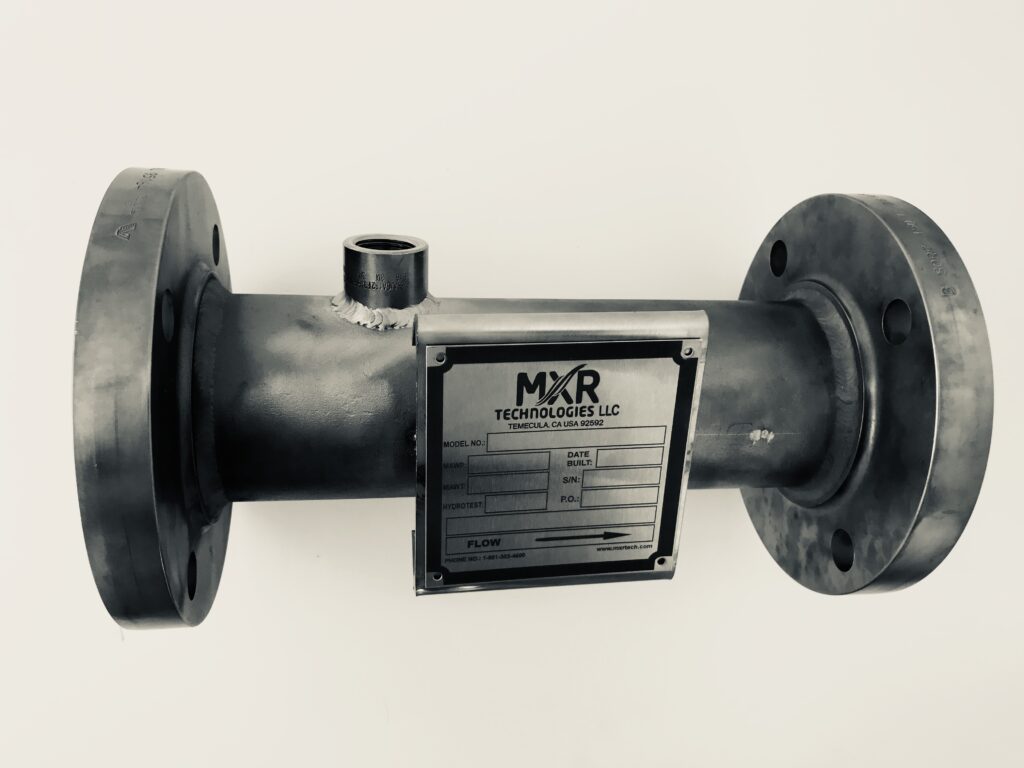MXR Technology LLC is a leader in Motionless Mixers for turbulent and laminar flow.
The standard Type “P” Static Mixer includes a side port for the introduction of an additive or chemicals to be mixed, units have no moving parts, and employ a simple design to provide the ultimate in mixing. Each unit achieves high mixing efficiency through multiple-action mixing. The liquid and additives are mixed through equal division, re-division, and rotational mixing to enhance turbulence and mixing. The “P” Static Mixer solves the problem when mixing of two or more liquids is required. The design flexibility of MXR’s Mixing Technologies will provide superior mixing performance in any liquid, gas, slurry, or particulate mixing. Standard Material of construction is Carbon Steel. Available in pipe sizes from 3/4″ to 48″ diameter. Typical mixing application includes mixing water or chemicals in Water and Wastewater Treatment Plants, Chemical Plants, Oil Refineries, Oil & Gas Plants, Food Processing, Pulp & Paper Mills.
General Applications:
A wide variety of process applications take advantage of static mixing technology including:
Industrial Applications
Process industries utilize static mixers in a broad range of applications such as:

North & South America
MXR Technologies LLC
40515 Green Oaks Dr.
Temecula, California, 92592 USA
Asia Pacific & Europe
MXR Technologies LLC
Paratong, Sta. Cruz, llocos Sur
Philippines
© 2014 – 2024 MXR Technologies LLC
Static Mixing, Reaction, Heat Transfer & Fluid Dynamics Technology
All Trade Marks are Property of their repective holders.
Privacy Policy | Powered by Ortiz Design